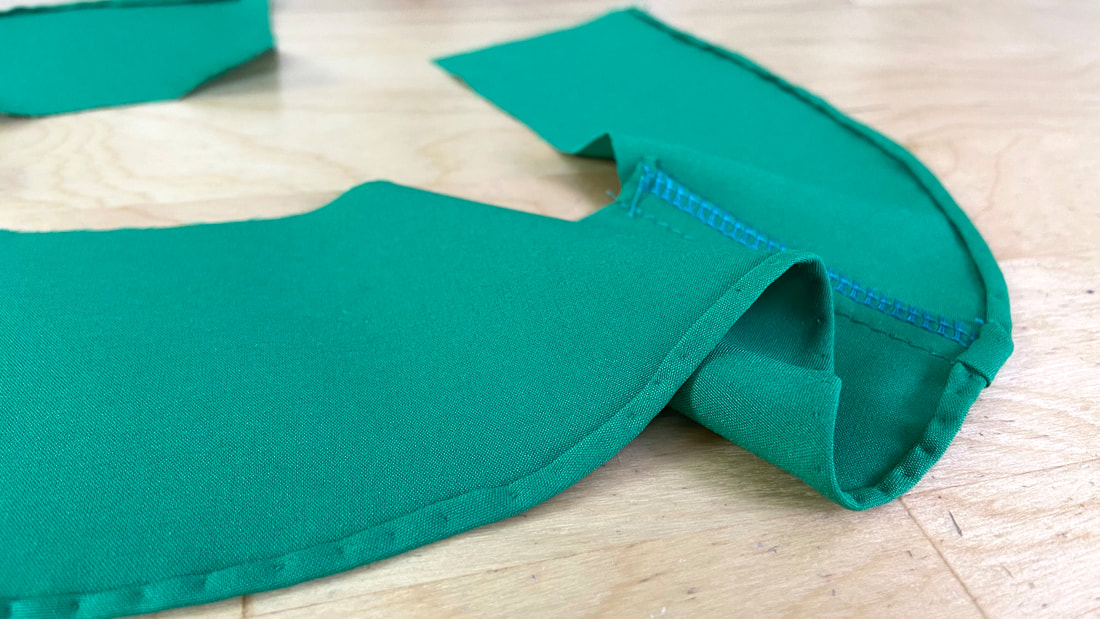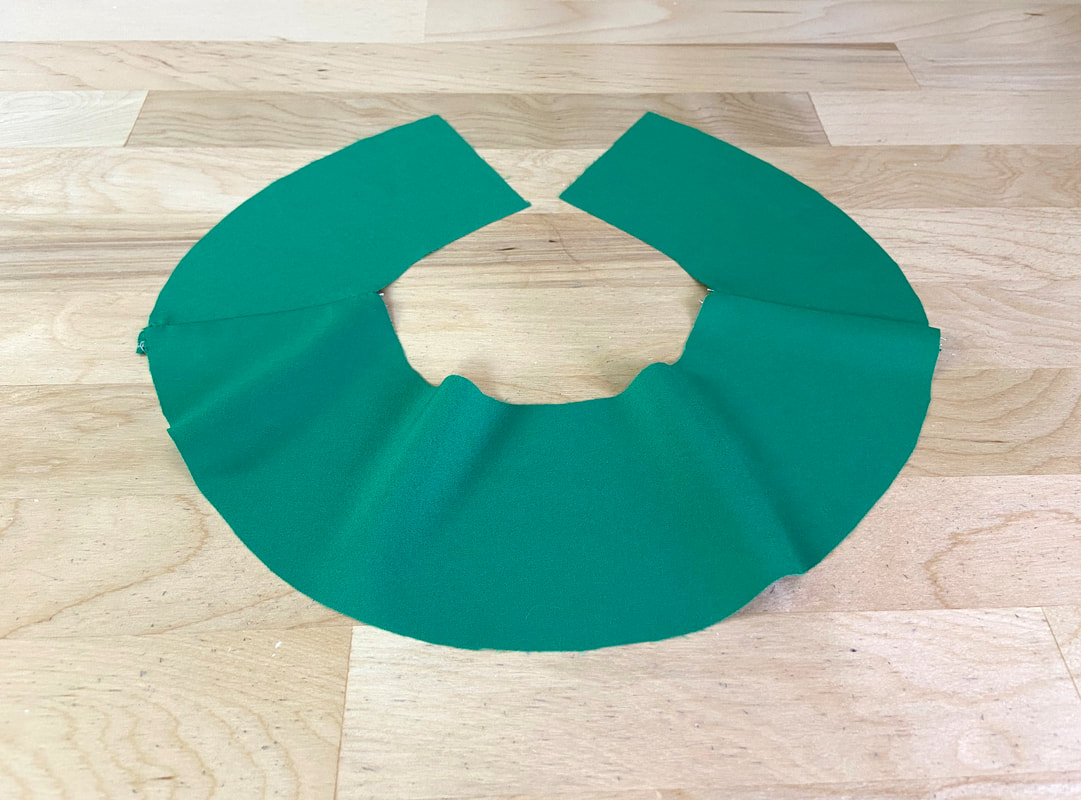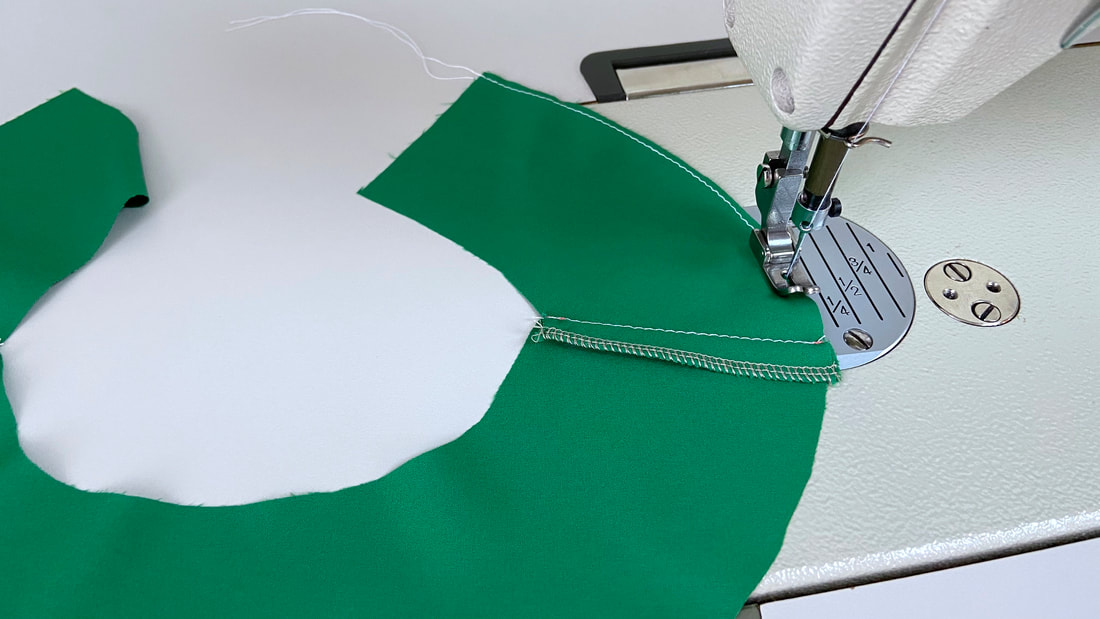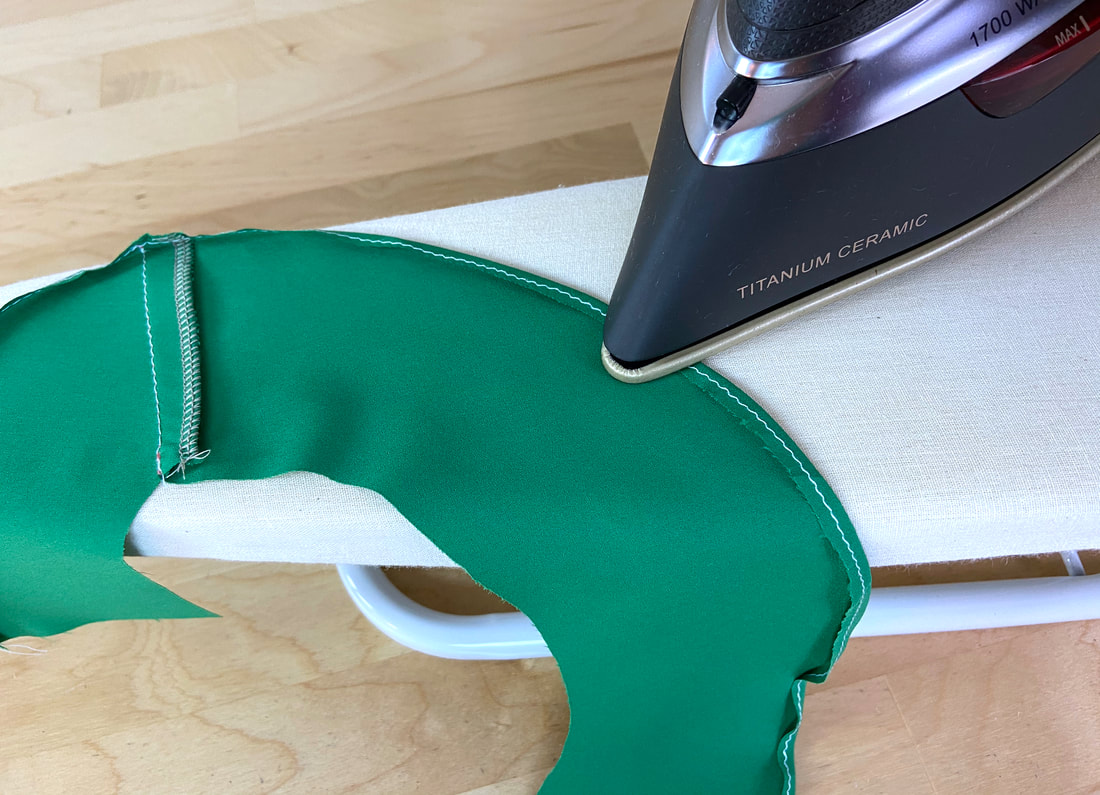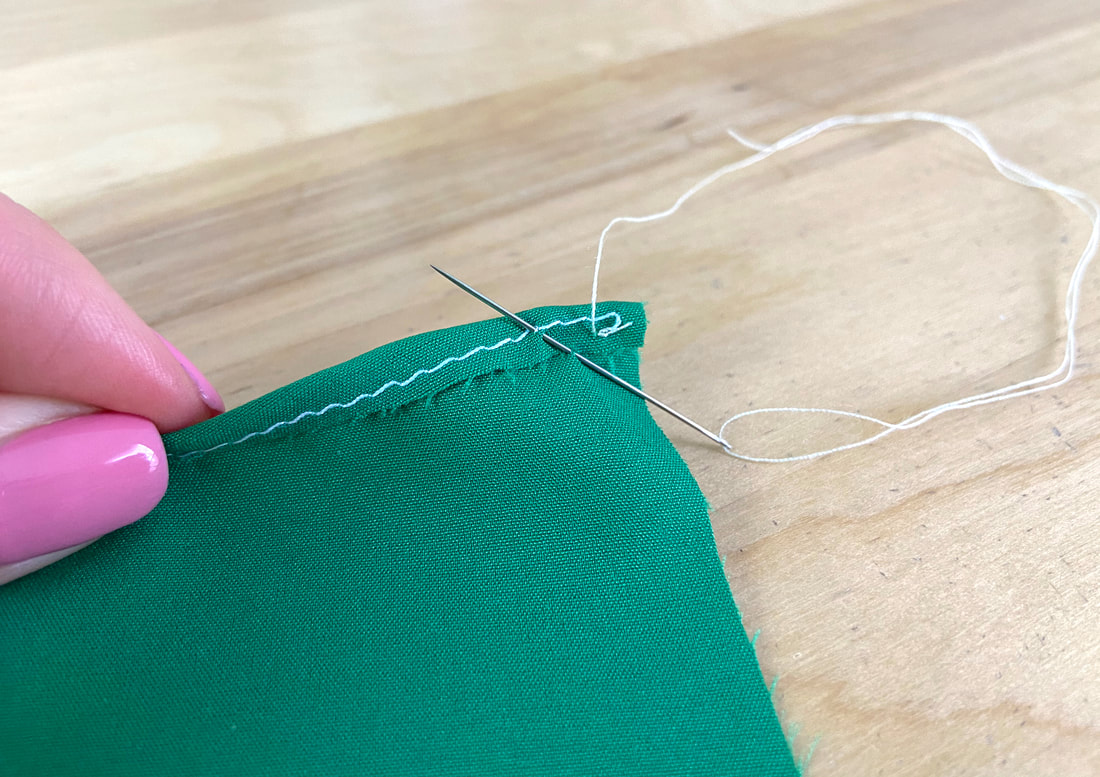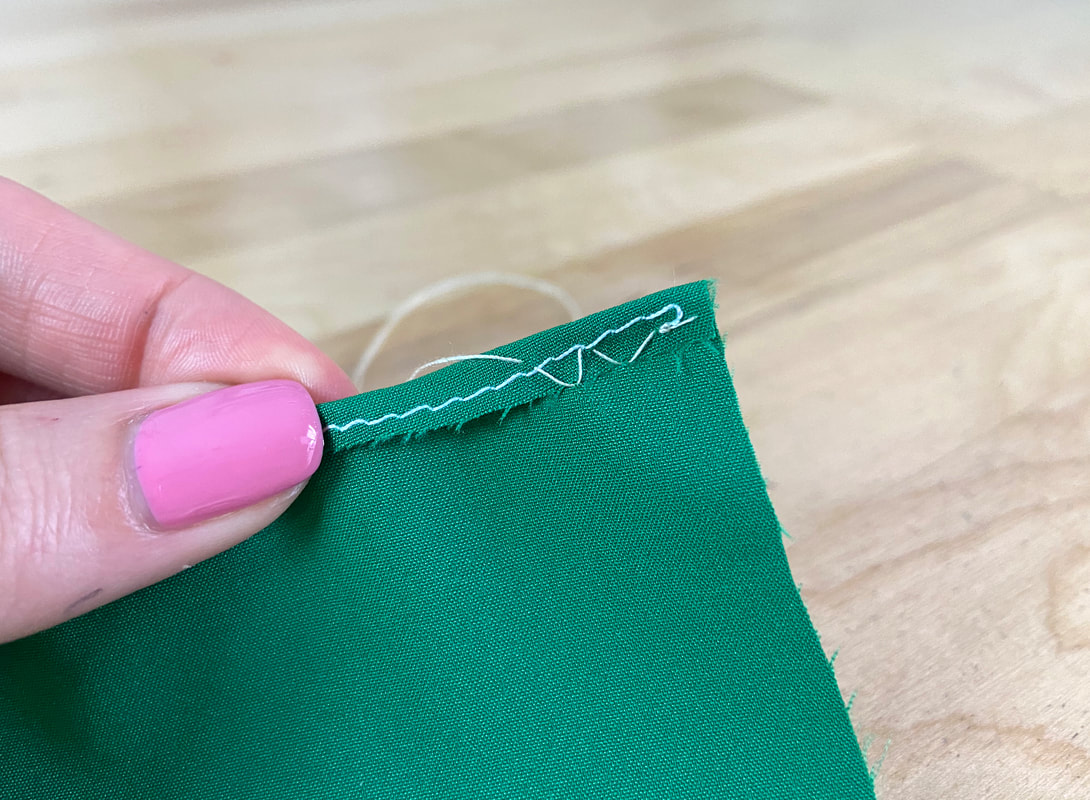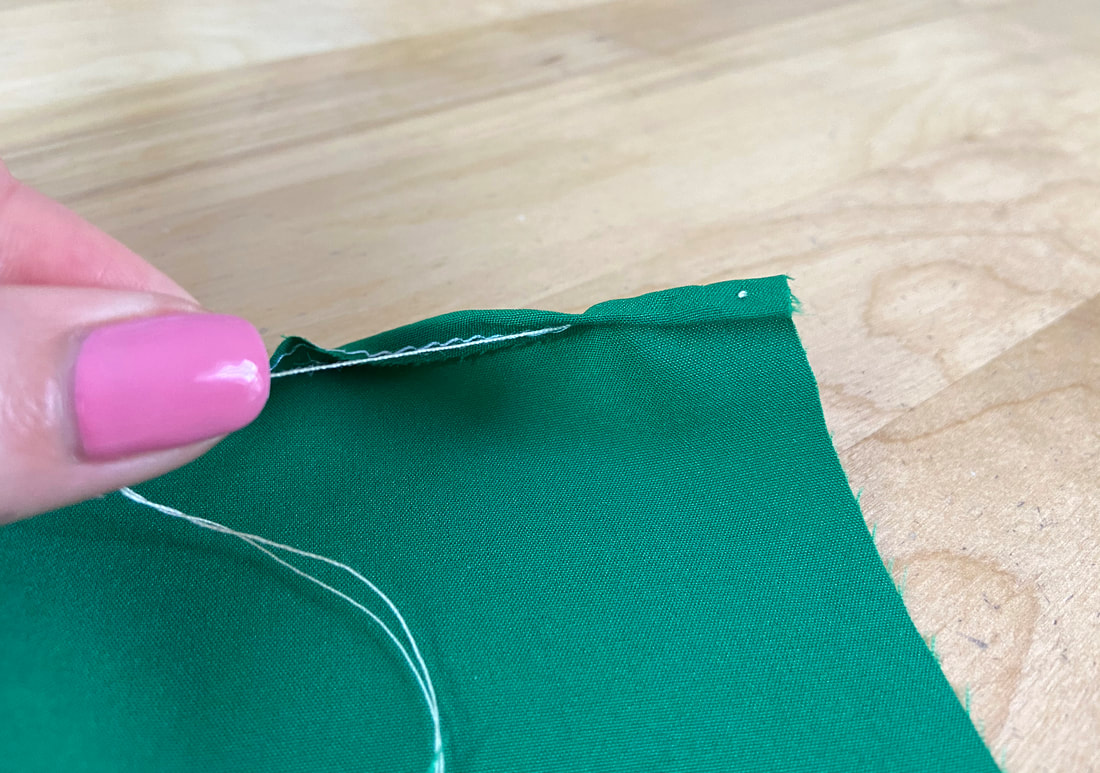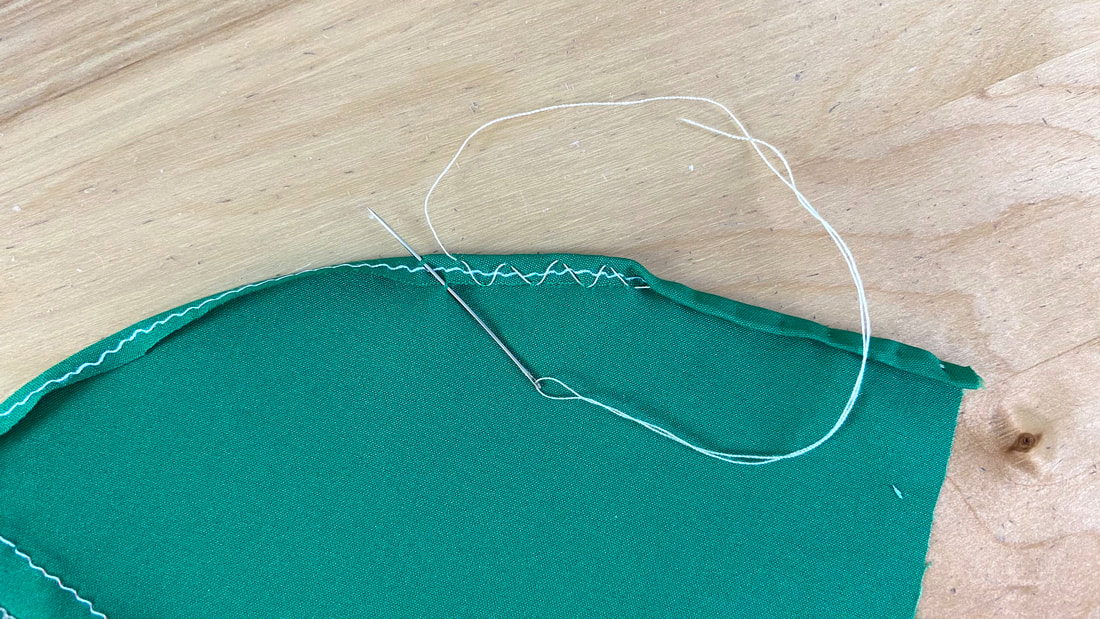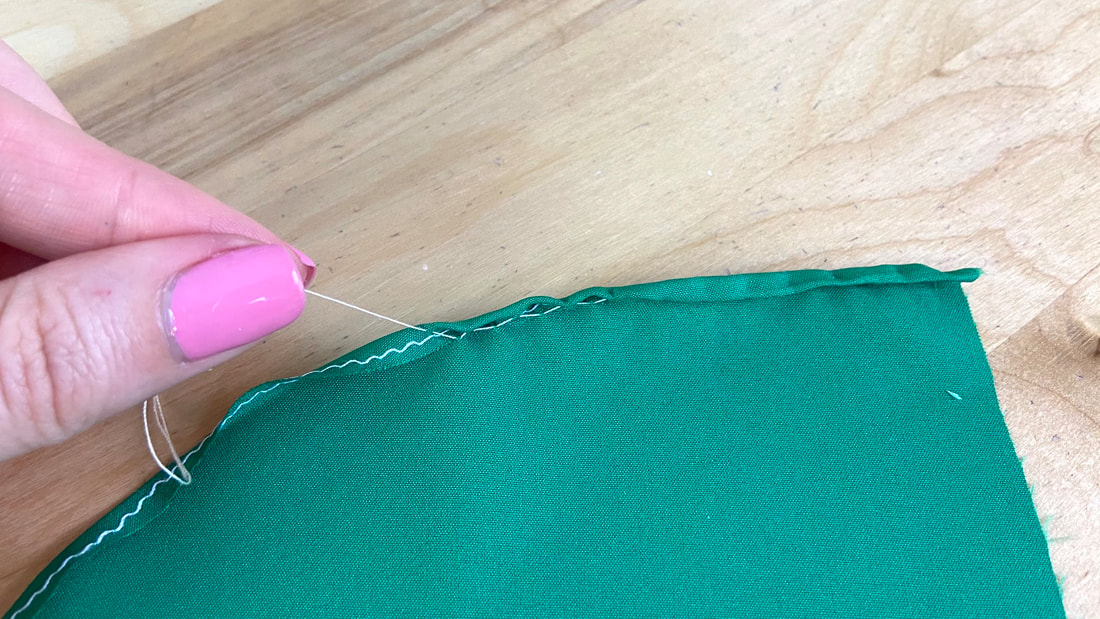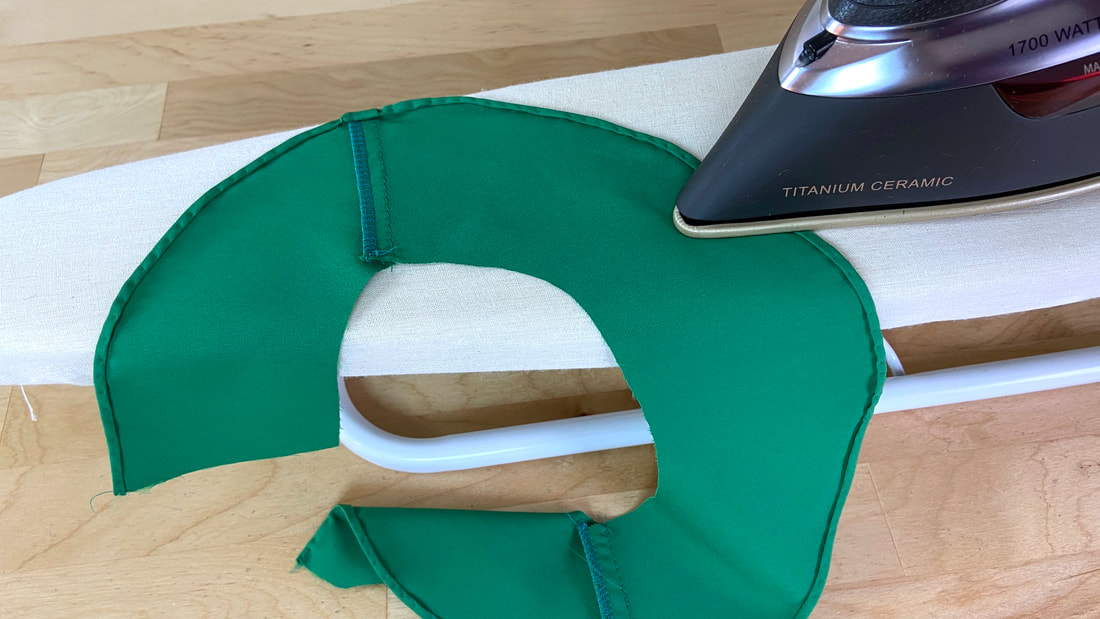A rolled edge finish can be applied either by hand, or by machine using a special hemming presser foot. The end result is a finish similar to a double-folded edge but much narrower: about 1/8” in width.
A rolled edge is considered a high quality, more expensive finish often used with fine silks, sheers and other lightweight fabrics. In the example below, you’ll learn how to complete both the hand-applied and machine stitched versions.
When it comes to finishing curved facing edges, it is easiest to apply a rolled stitch by hand.
1. Complete all facing seams and iron the seam allowance as directed (usually open).
2. Apply a machine straight stitch at 1/8" away the facing's raw edge. This will serve as a stabilizing stitch.
3. Fold and iron the edge towards the wrong side of the facing at a little beyond the stitch location (about 1/8"-1/4")
4. From the wrong side of the facing, stitch through the fabric fold and then again through 1-2 threads on the garment surface below it.
5. As a result, a V-shaped stitch will form. Repeat the stitching process until multiple V's are applied.
6. Gently pull the thread to automatically double fold and encase the fabric's raw edge underneath.
7. Continue the stitching process for 1"-2" increments, pulling the thread to close the fold as you stitch.
8. Last but not least, iron the finished facing edge to complete the application for a smooth professional finish.
If you prefer to apply the rolled finish by machine, follow these steps:
1. To prevent the seam allowance layers from getting tangled and pulling on the hemming foot, trim them down.
2. Double fold a length of 2 inches along the facing edge, toward the wrong side of the facing, and iron the fold gently.
3. Starting with the folded portion, insert the facing into the hemming presser foot gages aligning the double folded edge in the correct slots.
4. Machine stitch carefully, allowing the facing edge to gently feed through the hemming presser foot.
Due to the curved nature of the facing edge, you will have to turn and guide the fabric carefully through the folding gages as you machine stitch. Take special care as you pass the crossing seams. The less bulk they have, the easier it will be for the hemmer foot to fold them in the stitching process.
When to use: Use a hand-applied or machine rolled edge finish when working with sheer, silk or fine fabrics. While a bit time consuming, it offers a professional finish with minimal bulk that lays flat while also containing the fabric’s fraying edges effectively.

